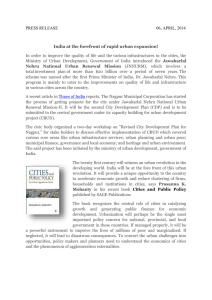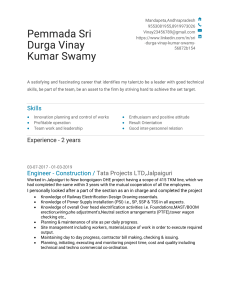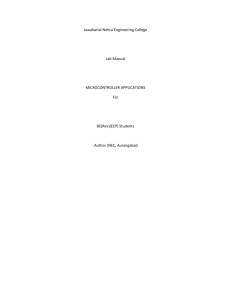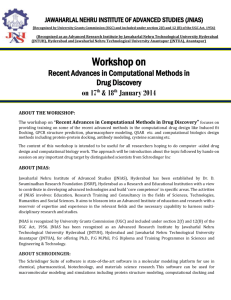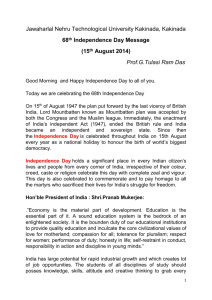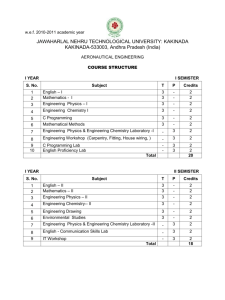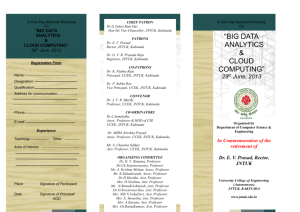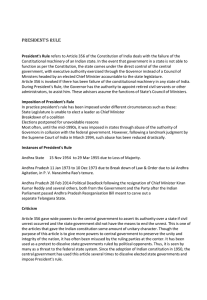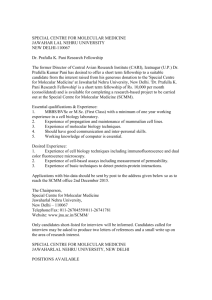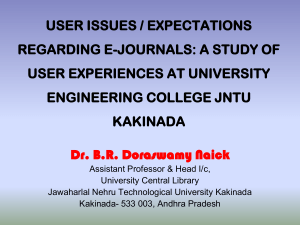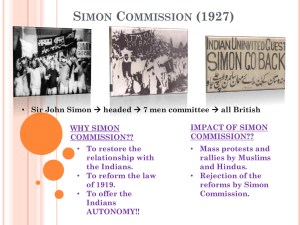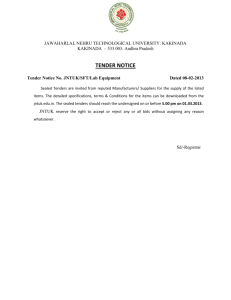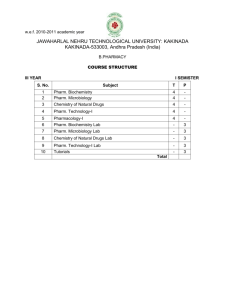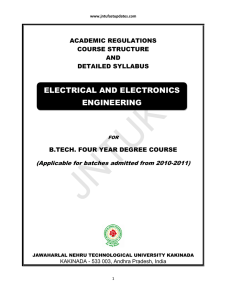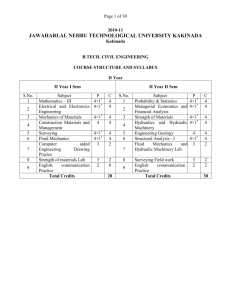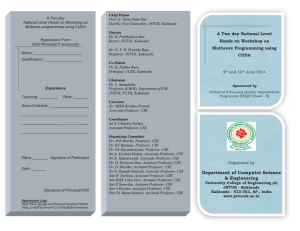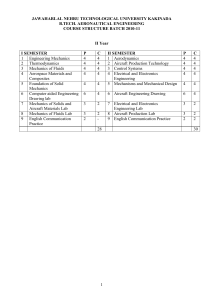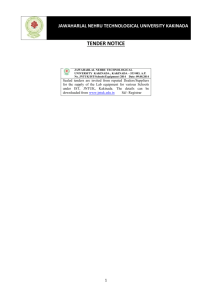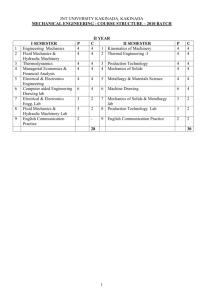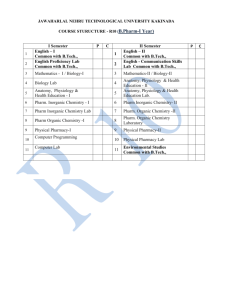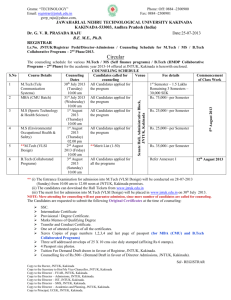utilization of digital ressources by faculty of jawaharlal
advertisement
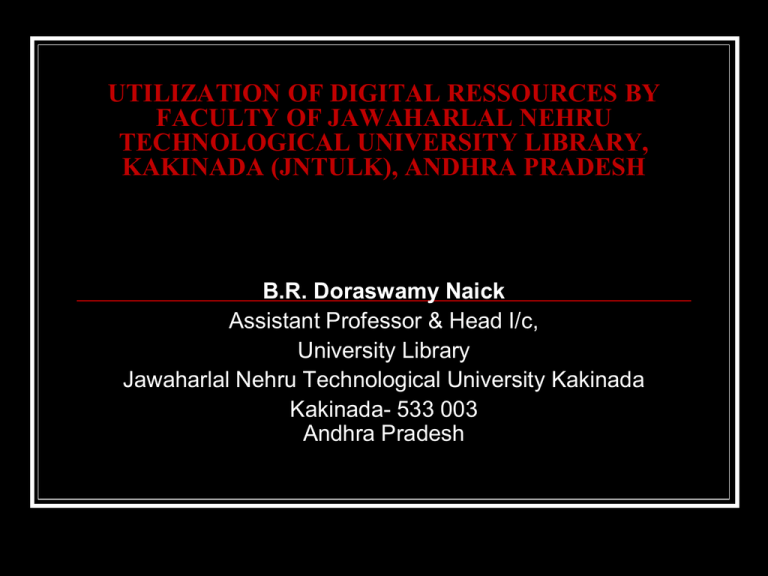
UTILIZATION OF DIGITAL RESSOURCES BY FACULTY OF JAWAHARLAL NEHRU TECHNOLOGICAL UNIVERSITY LIBRARY, KAKINADA (JNTULK), ANDHRA PRADESH B.R. Doraswamy Naick Assistant Professor & Head I/c, University Library Jawaharlal Nehru Technological University Kakinada Kakinada- 533 003 Andhra Pradesh INTRODUCTION Advances in computer applications during the past few decades have brought radical changes in the way information is gathered, stored, organized, accessed, retrieved and consumed. Today’s users have their information needs met via a number of options. They need not come physically to the library to use print formats but can stay at home or the office and access online library resources and services via networks or authentication methods at any time. In order to exploit the current information explosion, utilization of digital resources in the libraries for rapid development is necessary and important. Digital resources can be used for efficient retrieval and meeting information needs. This is very important for academic libraries since most of them call for more and more research work. This important fact is convincing many libraries to move towards digital resources, which are found to be less expensive and more useful for easy access. Jawaharlal Nehru Technological University (JNTU) The Jawaharlal Nehru Technological University (JNTU) was originally ‘The College of Engineering, Vizagpatnam’ at the time of its establishment in 1964. It is now a sprawing campus of 110 acres, green with mango trees in the fast developing port city of Kakinada, East coast of peninsula India. Kakinada has a rich political literacy and cultural heritage passed on through generations This college became a constituent of the Jawaharlal Nehru Technological University w.e.f 02-10-1972 through an act of legislature along with other sister institutions under the control of the then Director of Technical Education, Government of Andhra Pradesh. Earlier, it was affiliated to Andhra University. In the year 2003 the college has become autonomous. The main library is situated in a separated block housing more than 69,405 volumes and contributed 12 numbers of journals maintained by two qualified librarians and necessary supporting staff for 12hrs a day for 6 days and 9 a.m to 1.00pm on Sunday. It is undergoing changes for automation. In addition, a bookbank with more than 3000 volumes is at the disposal of students for borrowing by BC, SC and ST categories. These books are procured from the funds provided by the Social Welfare Department. Over and above, each of the Engineering Departments have Departmental Libraries to reduce the burden on the Central Library and for the convenience of staff. SCOPE AND LIMITATION This study is based on the user capability of the faculty members of Jawaharlal Nehru Technological University Kakinada (JNTUK), Andhra Pradesh. The scope of the study is limited to the use of digital resources and its aim is fulfill the teaching and research purposes of the faculties. It covers the availability of digital resources and services in JNTUK library. OBJECTIVES To assess the amount of knowledge and frequency in the use of the different types of digital resources made by the faculty; To find out the purpose and utilization of the digital resources and services by the faculty; To know the problems encountered by the faculties while accessing and using digital resources; To know the adequacy of information in digital resources; To suggest suitable suggestions to improve the digital resources and services for the benefit of users. METHODOLOGY The study was conducted by using a questionnaire method. The universe of the study consists of the faculty members of the various departments of Jawaharlal Nehru Technological University Kakinada (JNTUK). Altogether there were 172 faculty members in various departments, out of this a sample of 100 faculty members were taken at random as they study unit. The investigator visited all the departments of JNTUK and personally handed over the questionnaire to 100 faculty members. The completed questionnaires were personally collected after two or three days. About 95 filled questionnaires were returned; out of this five questionnaires were rejected from the sample, as they were not properly filled. The analysis of the data obtained through the questionnaires provided an in-depth interpretation for fulfilling the objectives. Findings: Faculties familiarity with digital resources Most of the faculty members (65.55%) are familiar with the usage of digital resources. Frequency of using the digital library About 35.56 percent of the faculty members are availing the digital library two or three times in a week, and 10 percent have rarely availed them. Frequency of using the digital resources Most of the faculty members 25.56%, 23.33%, 18.89%, 17.78%, 16.67%, 14.4.4%, and 10% are using search engines, e-mail Internet, CD-ROM’s, online journals, online databases, and OPAC ‘daily’ respectively. Relative frequency use of digital resources Most of the faculty members are mainly using e-mail services compared to other digital resources. Online databases and OPAC are less using compared to other digital resources. Purpose of using digital resources Majority of the faculty members (65.56%) are using digital resources for research purpose. Methods of learning to use digital resources Majority of the faculty members (67.78%) are learning the required skills for the usage of digital resources through ‘selfstudy’. Adequacy of information in digital resources Most of the faculty members (60%) felt that the information available in the digital resources is always ‘adequate’. Problems faced while using digital resources Majority of the faculty members (65.56%) and (61.11%) have encountered the following problems in getting access to digital resources, viz., delays in the downloading of pages, slow access of bandwidth etc.
